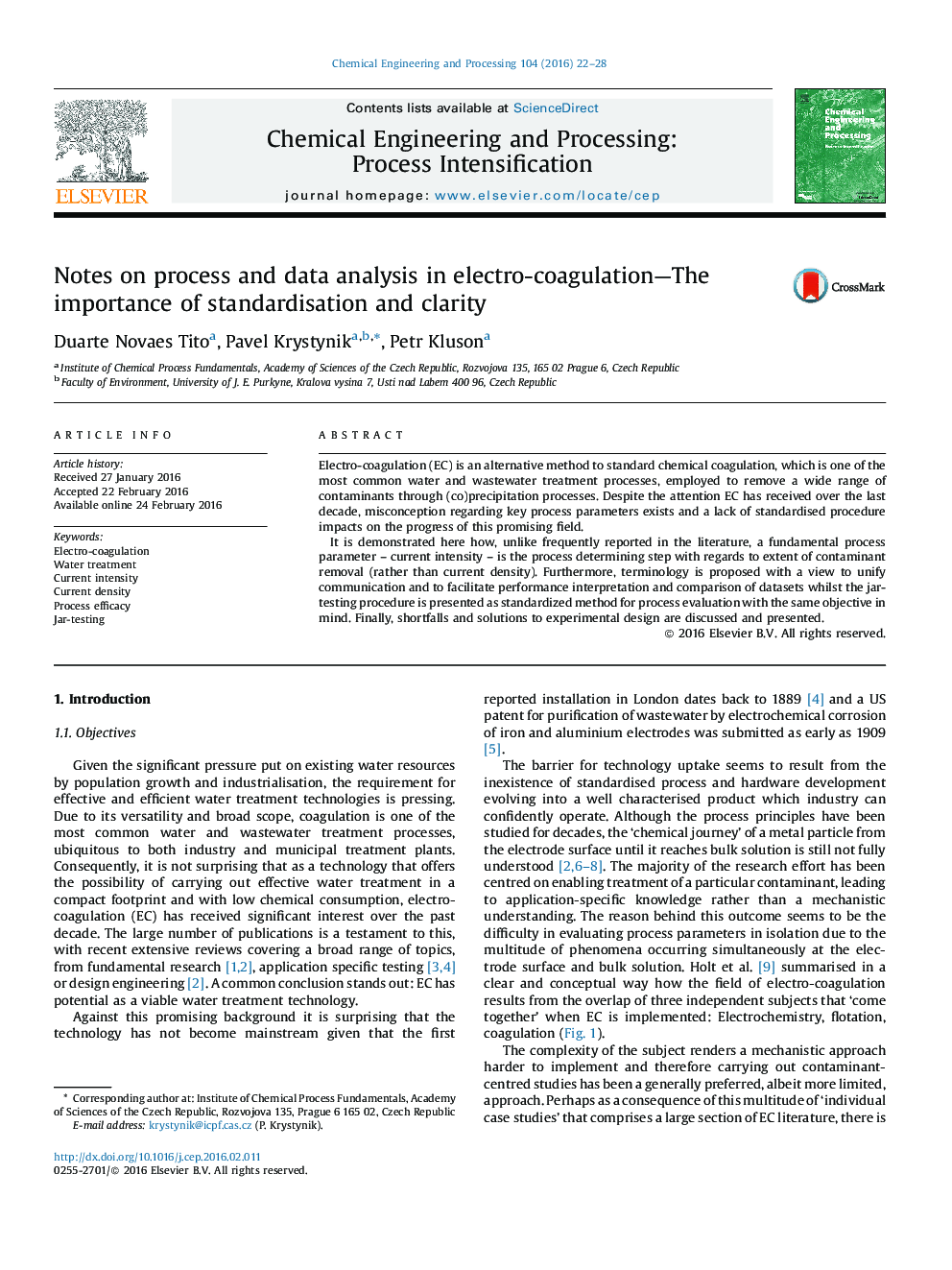| Article ID | Journal | Published Year | Pages | File Type |
|---|---|---|---|---|
| 687784 | Chemical Engineering and Processing: Process Intensification | 2016 | 7 Pages |
•Current intensity is the process determining step.•The difference between process efficacy and efficiency is key to a potential industrial user.•Jar-testing procedure enables straightforward comparison with industrial scale processes.•Poor experimental design limits scope of data
Electro-coagulation (EC) is an alternative method to standard chemical coagulation, which is one of the most common water and wastewater treatment processes, employed to remove a wide range of contaminants through (co)precipitation processes. Despite the attention EC has received over the last decade, misconception regarding key process parameters exists and a lack of standardised procedure impacts on the progress of this promising field.It is demonstrated here how, unlike frequently reported in the literature, a fundamental process parameter – current intensity – is the process determining step with regards to extent of contaminant removal (rather than current density). Furthermore, terminology is proposed with a view to unify communication and to facilitate performance interpretation and comparison of datasets whilst the jar-testing procedure is presented as standardized method for process evaluation with the same objective in mind. Finally, shortfalls and solutions to experimental design are discussed and presented.
